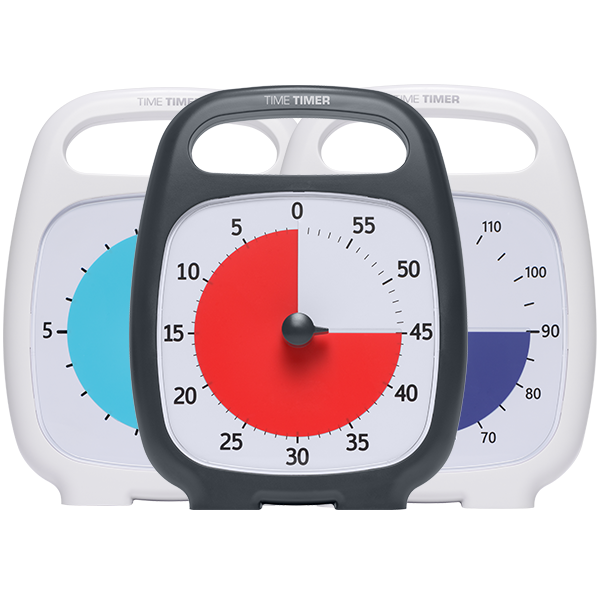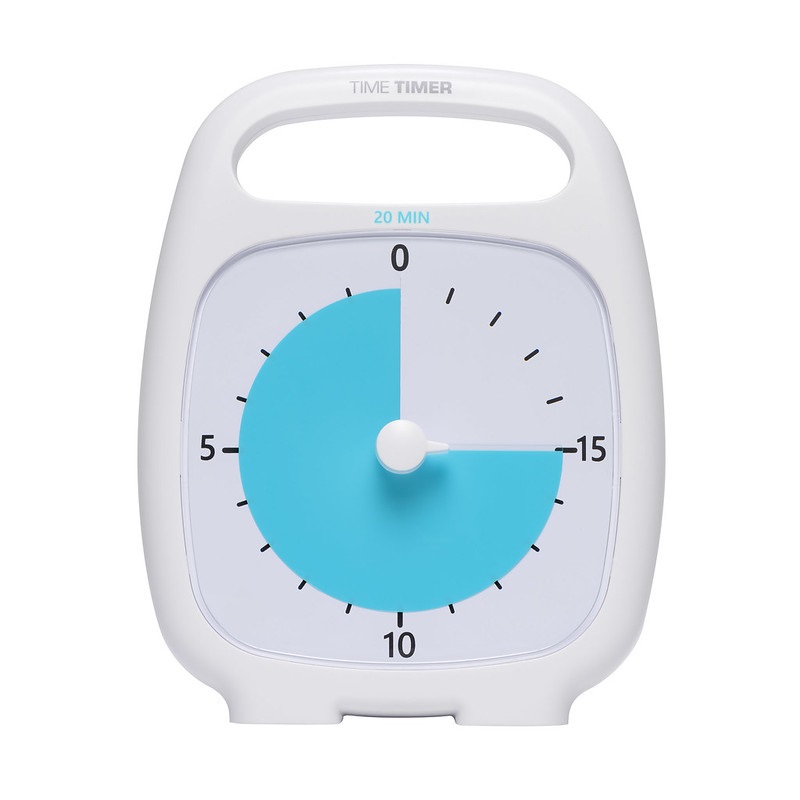By: Holly Blanc Moses
Have you ever heard an autistic child say, “Never”, “Forever” or “Always”? Neurodiverse children don’t process time in the same way as their neurotypical peers. This time difference can lead to high levels of emotional dysregulation, and confusion.
I’d like to support you with 4 easy time strategies for school work, chores, electronics use and physical activity using my favorite behavior helping product, the Time Timer visual timer. The Time Timer visual timer allows you to easily move a red disc to show the passage of time. I use it in my private practice and with my own neurodivergent sons.
1. School work.
Take a moment and imagine sitting in front of an assignment that is “boring”, “too hard” or “too easy” for the rest of your life. No wonder autistic children can feel overwhelmed. In addition to providing individualized accommodations, we need to address time. Let’s look at an example. Jack struggles to start his school work. His mother offers a mastered skill and sets the Time Timer visual timer for a short amount of time so he can see that it won’t take “forever”. He feels less stressed and can start his work.
2. Chores.
Learning to do chores is an important part of independence. Some children resist doing chores as it may feel overwhelming and never ending. At first, my differently wired 12 year old couldn’t tolerate cleaning his room for more than a minute or two. After providing clear directions, visual support, modeling and using the Time Timer visual timer, he can clean his room for 10 minutes. If the task wasn’t completed within 10 minutes, I set the timer for 30 minutes so he can see when it’ll be time to go back and finish.
3. Getting off electronics.
When we are doing an activity we like, time goes by fast. Playing video games for hours may only feel like a few minutes to our children. Also, it can be very difficult to stop playing. Help decrease anxiety and set the timer to show your child when they can play electronics again. Here’s an example: a parent wants to help their son remain calm while turning off an electronic device. They can set the Time Timer visual timer for a short amount of time so the child can see when he’ll play again. Start slow. The child may be more likely to stay calm and engage in other activities knowing that it won’t be “forever” before he can play the device again.
4. Physical activity.
Exercise is important for our mental and physical health. However, not all children are fans of physical activity. Honestly, I’m not either! If you’d like your child to increase their physical activity, a visual timer can help. Let’s look at an example, If a child currently engages in no physical activity, setting the Time Timer visual timer for a “doable” amount of time such as one to two minutes is a great place to start. Make sure to offer fun movement activities that are related to their interests.
Remember, differently wired children may not process time in the way you’d expect. Make schoolwork, chores, getting off electronics and exercise more possible by making time visual.
About Holly:

Holly Blanc Moses is a licensed therapist with over 23 years of experience supporting neurodiverse children and their families. She is also a mother of two boys (Autism/ADHD). https://www.hollyblancmoses.com/connect





